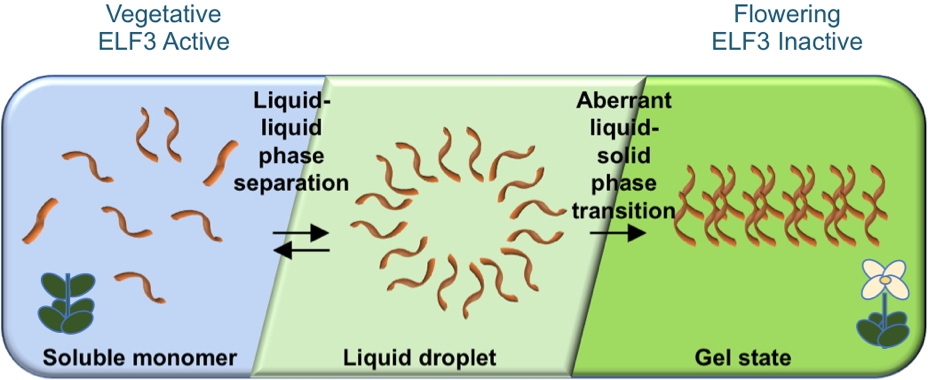Many plants and trees flower in the spring due to longer days and warmer weather. With climate change, plants will precociously flower months in advance due to increasing temperatures. This often results in smaller fruits and lower seed production. How plants sense temperature has been a long-standing question.
In a recent discovery, an international team including researchers from our institute sheds light on this mystery. The researchers focused on a protein called EARLY FLOWERING3 (ELF3). ELF3 is a key part of the circadian clock and is necessary for plants to respond correctly to changes in temperature. In the model plant
Arabidopsis thaliana (thale cress), ELF3 responds to temperature directly. In mild temperatures, it switches off genes during the night, and therefore slows down growth and flowering. When it gets warmer, however, ELF3 no longer turns off its target genes. This effectively “releases the brakes” on growth and flowering, enabling cell expansion and flowering.
Writing in the journal
Nature, the teams show that ELF3 has a sequence related to prion proteins. Prions are proteins that occur in two states, a soluble form and a highly condensed multimeric state, and are most well known for being connected to diseases such as Huntington’s disease and bovine spongiform encephalopathy (“mad cow disease”). While prions were first identified for causing disease, proteins with prion-like sequences are very common and found across the kingdoms of life from fungi to plants and animals. The researchers have found that the prion-related domain in the protein ELF3 acts as a reversible temperature switch. At lower temperatures, ELF3 is in the active state, repressing gene expression. As the temperature increases, the ELF3 prion-domain switches directly in response to temperature causing ELF3 to phase separate and form liquid droplets, inactivating the protein.
 ELF3 undergoes a phase transition from a soluble to liquid droplet to a gel form.
ELF3 undergoes a phase transition from a soluble to liquid droplet to a gel form.
This enables the Arabidopsis plants to sense warmer temperature and activate flowering. Simply by replacing a region of ELF3 containing the prion sequence with the same region of ELF3 from another plant species that does not encode a prion is enough to abolish the response to warmer temperatures. In this case, the plants are healthy and grow normally but no longer flower early under warmer temperatures.
These findings suggest that prion domain proteins such as ELF3 could play a general role as environmental sensors due to their ability to switch between the active and inactive states. This study highlights an important mechanism of thermosensing and provides a target for plant breeding programs and environmental adaptation.